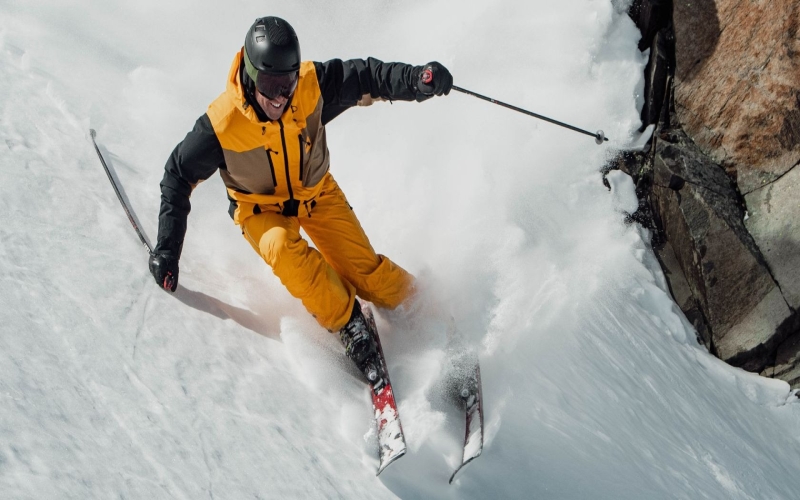It’s not easy for winter sports enthusiasts to choose the right pair of ski pants. This imbalance, subtle yet powerful, is exposed on closer examination. Surprisingly, the process of selecting ski trousers appears to be more straightforward for men than women, with this article discussing various issues that lead to such differences and challenges experienced by women in finding the best kind of ski pants.
1. Standard Sizing Predicament
One of the foremost difficulties faced by women when purchasing ski trousers is related to sizing. On one hand, while men’s sizes tend to be more standardized, there are huge inconsistencies across brands in women’s sizes. This makes it difficult for women to know their size with certainty and usually leads them into enduring frustrating trial-and-error experiences.
2. Diversity in Women’s Body Shapes
Women have a wider variety of body shapes and proportions as compared to men. Despite being celebrated under different circumstances, this variability is problematic within the context of ski clothing manufacturing. In fact, when they are designed as one-size-fits-all item, ski pants may not fit well on the unique curves and shapes that define womanhood thereby leaving many without necessary support and feeling uncomfortable at skiing slopes.
3. Fashion vs. Function
In general, fashion takes precedence over functions in the market for ski wear; yet this is even more pronounced for female skiing pants. For instance, where ski trousers mens alternatives put emphasis on performance and longevity, those meant for these kinds of sports ladies are likely to focus more on style aspects. Striking a balance between fashion-forward designs and high-performance features becomes a delicate tightrope walk for women seeking ski trousers that meet both their functional and aesthetic needs.
4. Limited Technical Features
When it comes down to technical features associated with them men’s trousers tend to come with an extensive assortment whereas ladies’ choices are mostly lacking in this regard. For example, ventilation systems or reinforced knees included in both can be found predominantly in male skis pants. This makes female skiers have little choice in selecting trousers tailored specifically to their performance requirements.
5. Color Palette Constraints
The color range in women’s ski trousers is surprisingly limited compared to the vibrant selection for men. While there are those who may prefer muted colors, some others may find a lack of choice discouraging as they look for bright, bold color options. Meanwhile, men’s skiing pants offer a wider array of colours that can be used to express oneself more on slopes.
6. Accessibility and Availability
Despite increasing gender inclusivity trends in sports and outdoor activities, the ski apparel industry still lags behind in ensuring equal access and availability for men and women. Such differences make it difficult for women to find multiple options both offline and online complicating their decision making process even further.
7. Lack of Customization Options
On the contrary, women’s varieties might lack this level of tailoring that characterizes male ones whereby men tend to have adjustable waist bands or cuffs among other personalized features in skiing pants. This could be achieved if there was more variety regarding customization options given the significant variation between female figures. The possibility of adjusting main areas such as waist measurements, length of legs and overall fit would enable women personalize their ski trousers to perfectly suit their comfort and performance needs.
8. Inadequate Insulation Choices
Cold weather conditions are an inherent part of winter sports, and insulation is a critical factor in determining the warmth of ski trousers. Men’s options frequently offer a variety of insulation levels to accommodate different climates and preferences. In contrast, women’s ski trousers may present limited choices, leaving female skiers with fewer alternatives to suit varying temperature conditions. Expanding the range of insulation options in women’s ski pants would provide greater flexibility for users to adapt to diverse weather scenarios.
9. Pricing Disparities
Another noteworthy aspect of the ski trouser dilemma revolves around pricing. In some cases, women’s ski trousers may be priced higher than their male counterparts despite similar features and specifications. This pricing disparity adds an additional layer of complexity to the decision-making process for women, as they must navigate not only functional and stylistic considerations but also budget constraints. Achieving price parity between men’s and women’s ski trousers would contribute to a more equitable shopping experience, enabling women to make choices based on their preferences rather than financial constraints.
Conclusion
In the field of ski trousers, choosing the right pair from Snow + Rock proves to be a more complex endeavor for women than men. From sizing inconsistencies to limited technical features and a constrained color palette, women encounter unique challenges that go beyond mere style preferences. As the outdoor industry evolves, it is essential for manufacturers to acknowledge and address these gender-specific concerns, ensuring that women can confidently and comfortably hit the slopes in trousers that meet both their performance and style expectations.

